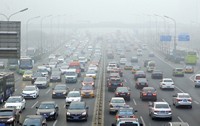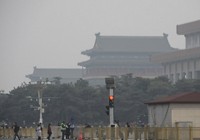Advertisement
Grab your lab coat. Let's get started
Welcome!
Welcome!
Create an account below to get 6 C&EN articles per month, receive newsletters and more - all free.
It seems this is your first time logging in online. Please enter the following information to continue.
As an ACS member you automatically get access to this site. All we need is few more details to create your reading experience.
Not you? Sign in with a different account.
Not you? Sign in with a different account.
ERROR 1
ERROR 1
ERROR 2
ERROR 2
ERROR 2
ERROR 2
ERROR 2
Password and Confirm password must match.
If you have an ACS member number, please enter it here so we can link this account to your membership. (optional)
ERROR 2
ACS values your privacy. By submitting your information, you are gaining access to C&EN and subscribing to our weekly newsletter. We use the information you provide to make your reading experience better, and we will never sell your data to third party members.
Environment
Blowing In The Wind
Air Pollution: Dirty air blows across the Pacific and Atlantic Oceans, National Research Council report finds
by Cheryl Hogue
September 29, 2009

Some U.S. air pollution blows in from Asia, and winds carry some dirty air from the U.S. to Europe, according to a report released today by the National Research Council.
Plumes of air pollution blow across oceans in the Northern Hemisphere and help dirty the air thousands of miles from where they are emitted, the report says.
"Local pollution can be affected by global sources," the report says, "although in most cases, air quality violations are driven by local emissions."
The report examined four types of air pollutants: ground-level ozone and its precursors, particulate matter including sulfates and soot, mercury, and persistent organic pollutants such as DDT. All can be transported over long distances, the report says.
"The atmosphere connects distant regions of our planet," says Charles Kolb, chair of the NRC committee that wrote the report. "Emissions within any one country can affect human and ecosystem health in countries far downwind," adds Kolb, who is president and chief executive officer of Aerodyne Research.
The report recommends further research on long-range transport of pollution. This includes improved methods for identifying chemical "fingerprints" for pollution from specific sources, such as measurements of isotope ratios or molecular chirality.
It also suggests investigation into how emissions from ships and aircraft can complicate detection of pollution carried far from land-based sources.
In addition, the report urges policymakers to pursue cooperative international action to address emissions from both domestic and foreign sources.
The report is available at sites.nationalacademies.org/NRC/index.htm.




Join the conversation
Contact the reporter
Submit a Letter to the Editor for publication
Engage with us on Twitter